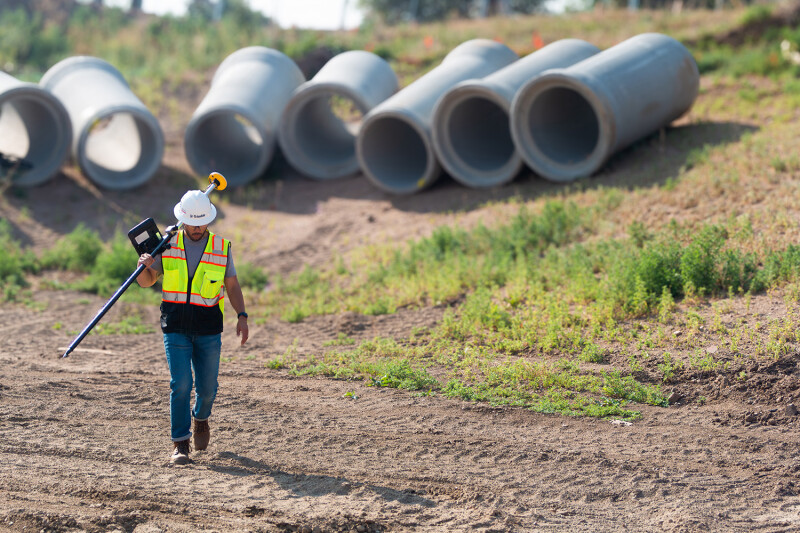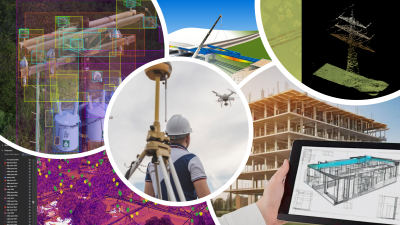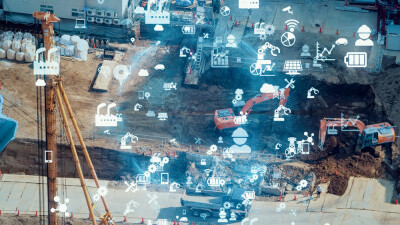Our coverage at Geo Week News, we hope, is a reflection of trends we’ve been seeing across industries like reality capture, surveying, geospatial, and AEC, sectors that we see coming together even more than they have traditionally. That trend only continues to grow more true with each passing year, and as we turn the page to 2025 we can only expect it to continue. We are continuing to use this month to think about what we could be seeing in the coming year and the trends that will ultimately come to define the industry over the next 12 months. Few companies can give a better perspective on the thoughts and trends around these sectors than Trimble, which is a leader for professionals across these sectors.
If we break down our coverage into three main segments – 3D technology, surveying and geospatial, and AEC plus operations – we see all of these represented by Trimble. A trip to their annual conference, Dimensions, for example, has featured excursions to a mock construction site to show off for their AEC-focused audience. Those same days, one can find themselves in conversation with long-time surveyors, as well as those just breaking into the industry working in the reality capture space. All of which is to say, we were thrilled to receive insights from Trimble representatives of what they saw coming in 2025 as the biggest trends that will define the year for these spaces.
Interoperability Will Prove Crucial
Sticking with this theme of different industries coming together, we start with an overarching trend that Boris Skopljak, Trimble’s VP of Geospatial, mentioned. He talked about all of the different industries that are now leaning on geospatial data and insights, and how that leads to the issue of data integration and just general challenges around sharing that data effectively. Moreover, he points to three specific areas in which Trimble’s customers are seeing an uptick in demand: Data center construction, telecommunications infrastructure, and energy infrastructure modernization. These areas are either completely new or rapidly shifting, and they require surveying and mapping professionals to be crucial members of the team. According to Skopljak, this, in turn, requires surveyors to adapt to their current environments.
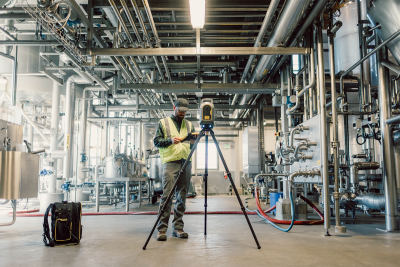
“The surveyor’s toolkit is expanding dramatically, and we are seeing these projects increasingly utilize mobile mapping solutions and 3D model-based field workflows to complement traditional surveying toolkits. To stay competitive, surveyors need to adapt their skillsets and workflows accordingly. This means becoming proficient with integrated technologies like reality capture tools, and BIM/digital twin workflows. The key implication for surveyors is the need to deliver more interoperable data that can seamlessly integrate into broader digital ecosystems, particularly for clients working across multiple platforms and industries, many of which might be new to geospatial technology.”
Artificial Intelligence and the Industry’s Labor Shortage
If you talk to anyone in an executive position within the AEC industry – and surveying, for that matter – about what their biggest pain points are right now, it’ll almost certainly come down to a lack of qualified workers. In fact, according to a survey of Trimble customers, 54 percent of respondents identified this labor shortage as the biggest problem facing them in 2025, according to Scott Crozier, VP of Civil Construction with Trimble. There are a lot of strategies being employed by firms looking to get past this issue, including fresh ways to attract young talent. However, technology is expected to be at the center of most of these efforts.
“We expect that technology providers will continue innovating with the goal of helping offset these challenges, for example by making it easier to utilize their technology solutions to their fullest potential to compensate for fewer workers,” Crozier said. “Technology company investments in learning labs, task automation, and easier data analysis and decision-making will also help attract younger workers and alleviate some of the labor challenges contractors are facing. Autonomy will continue to progress in 2025 as well, with more testing moving out of test sites and into field trials. Task automation will continue to deliver value and help alleviate the labor shortage now.”
Artificial intelligence isn’t the only technology that can and will help with the labor shortage, but it certainly can be one of the major examples. AI can mean a lot of different things today, but at its heart and in its most ideal form, it can help automate some tedious and simple tasks and leave the more complex work for the professionals who are dealing with increasing workloads. In that aforementioned survey, 59 percent of respondents said that AI and machine learning will be one of the biggest trends they see in 2025, according to Aviad Almagor, Trimble’s VP of Tech Innovation.
He continued to note that AI will help with labor issues, along with other broad inefficiencies still seen throughout the AEC sector.
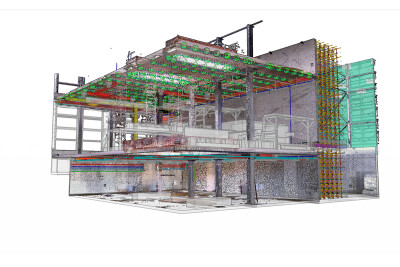
“[AI] has and will continue to transform the construction industry due to the many efficiencies it brings. From automating processes to improving decision-making to enhancing team productivity, we expect AI/ML to continue to streamline the construction industry, creating more efficient, cost-effective, and safer construction projects.”
Reality Capture’s Continued Growth
Reality capture continues to make an impact on both the surveying and AEC industries as both hardware and software improve for capturing and processing this crucial data. As Nathan Patton, Trimble’s Product Marketing Manager for Field Systems, notes, the field has proven its value for years now, and the tools are only making it easier for professionals to get on board. He sees reality capture only continuing to improve in 2025.
“These [reality capture] tools will not only offer a precise representation of the construction progress but also serve as a common language, so that anyone, anywhere, with any device can access and benefit from reality capture data. This includes enabling people to capture scans and images directly from their phones and tablets, as well as robust massive areas captured at scale with mobile mapping. This shared visual and data-driven narrative is essential in aligning everyone's efforts towards a common goal, thereby enhancing collective efficiency and reducing conflicts and misunderstandings.”
This brings us full circle to where we started with interoperability, and more broadly an evolving industry. For surveyors and other geospatial professionals trying to stay ahead in 2025, Skopljak has a recommendation - stay nimble, and be open to changing processes for new customers.
“Broadly speaking, geospatial data is at the center of many industries and helping to drive more business to our survey and mapping customers. But it also requires people and process changes that, as an industry, we need to be ready to make. Businesses that can embrace the technology faster, transform their processes, and speak in a domain-rich context with their customers will be more resilient and will thrive in this age of transformation.”



